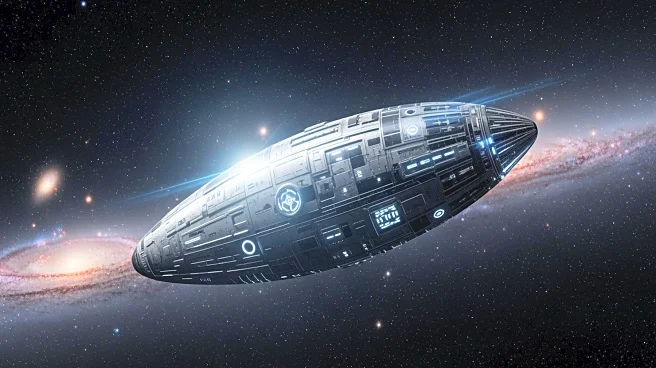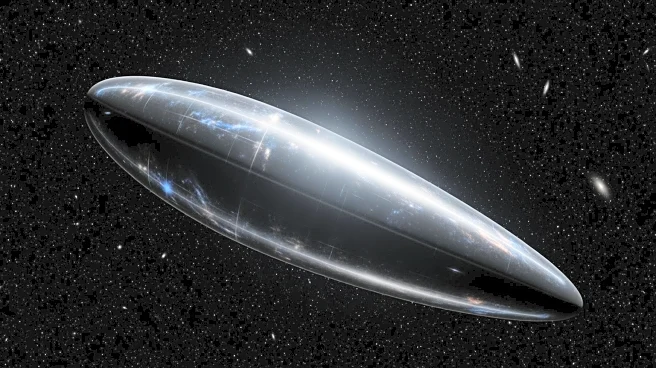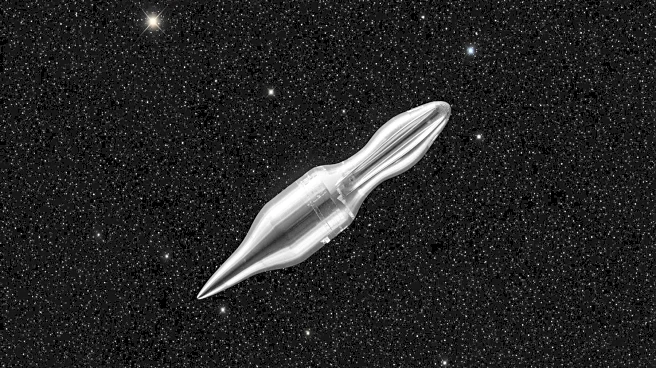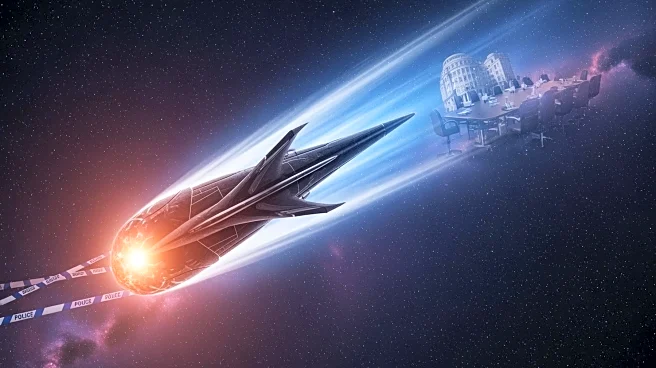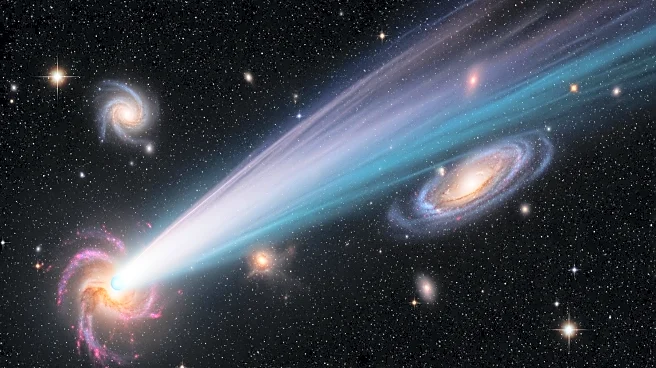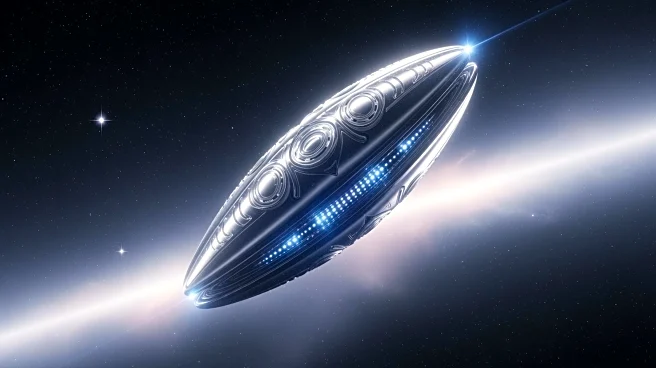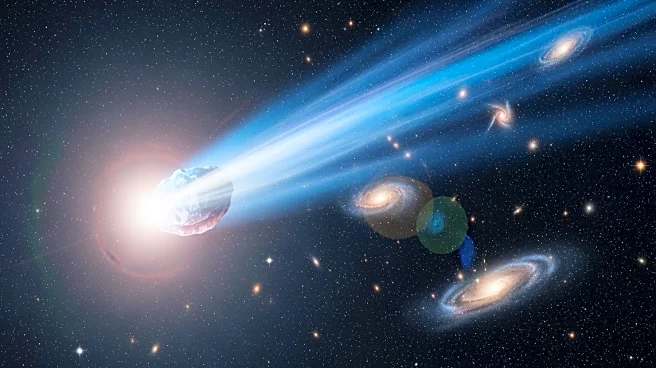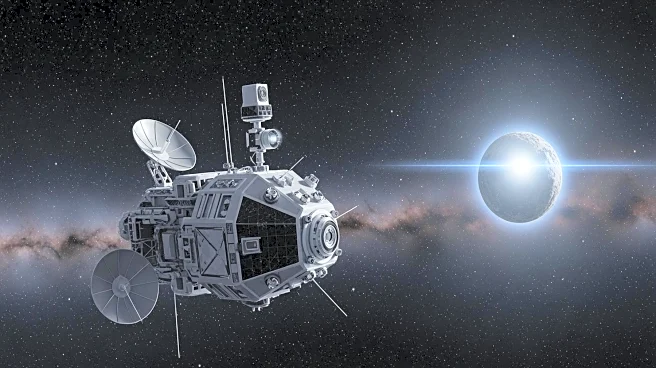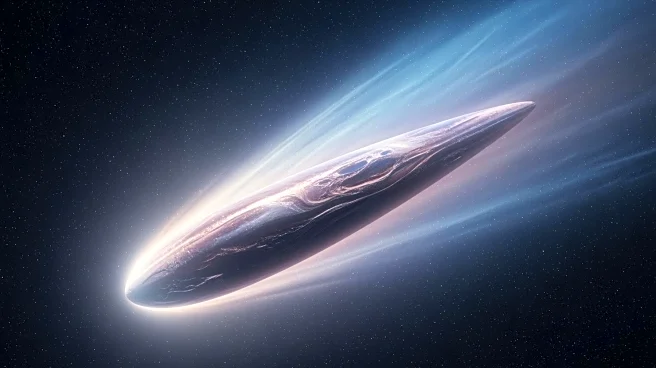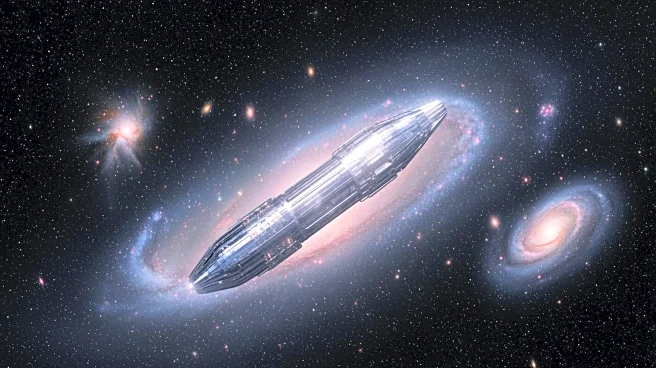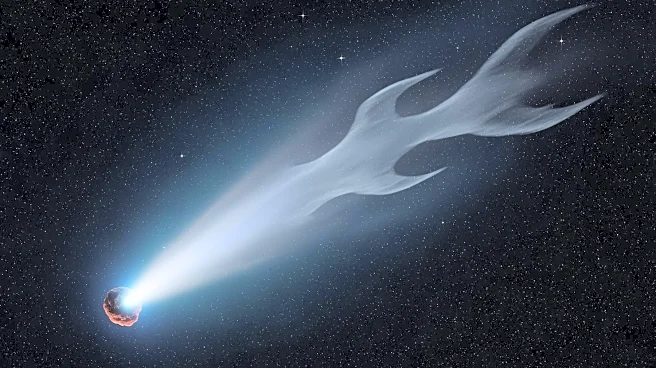What's Happening?
A mysterious interstellar object, dubbed 3I-ATLAS, has captured the attention of the astronomical community since its discovery in early July. While most scientists believe it to be an interstellar comet,
Harvard astronomy researcher Avi Loeb has proposed that it might be an alien spacecraft. Loeb's theory is based on recent observations from the Nordic Optical Telescope, which show a change in the direction of the object's debris tail, known as an 'anti-tail.' This phenomenon is typically explained as an optical illusion caused by the Sun's gravity and the relative position of Earth. However, Loeb suggests that the anti-tail could indicate 'braking thrust,' implying controlled maneuvering by an alien craft. The object is currently hidden behind the Sun and will not be observable until December 19, when its trajectory can be further analyzed.
Why It's Important?
The debate surrounding 3I-ATLAS highlights the ongoing interest and speculation about interstellar objects and their origins. If Loeb's hypothesis is correct, it could have profound implications for our understanding of extraterrestrial life and technology. The possibility of an alien spacecraft maneuvering within our solar system would challenge existing scientific paradigms and potentially open new avenues for research in astrobiology and space exploration. On the other hand, if the object is simply a comet, it still provides valuable insights into the behavior and characteristics of interstellar bodies. The scientific community stands to gain significant knowledge either way, but the stakes are particularly high if the object is indeed an alien craft.
What's Next?
The object is expected to reappear on December 19, at which point astronomers will be able to determine whether its trajectory has been altered by a braking maneuver. This will provide crucial evidence to support or refute Loeb's theory. Until then, the astronomical community will continue to monitor the situation and prepare for further observations. If the object does exhibit signs of controlled maneuvering, it could prompt a reevaluation of current theories about interstellar travel and the presence of extraterrestrial technology. The outcome of these observations could influence future research priorities and funding in the field of astronomy.
Beyond the Headlines
Loeb's controversial stance on the possibility of alien technology reflects broader debates within the scientific community about the existence of extraterrestrial life. His willingness to entertain unconventional ideas challenges traditional scientific approaches and encourages open-mindedness in the exploration of space phenomena. This event also underscores the importance of advanced observational technologies, such as the Nordic Optical Telescope, in expanding our understanding of the universe. The implications of this discovery could extend beyond scientific circles, influencing cultural perceptions of space exploration and the search for alien life.
